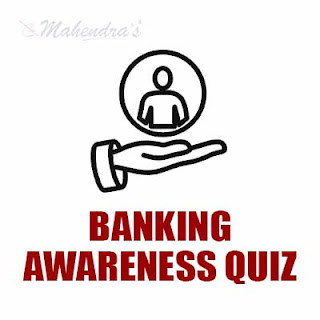
Q1. _____ refers to the ability of a party to produce a greater quantity of a good, product, or service than competitors, using the same amount of resources.
1) Absolute advantage
2) Aggregate demand
3) Balance of trade
4) Barter System
5) Bond
Answer-1
प्र1. _____ संसाधनों की एक ही राशि का उपयोग करके, प्रतियोगियों की तुलना में किसी भी अच्छे, उत्पाद या सेवा की अधिक मात्रा का उत्पादन करने के लिए किसी पार्टी की क्षमता को दर्शाता है।
1) निरपेक्ष लाभ
2) कुल मांग
3) व्यापार का संतुलन
4) बार्टर सिस्टम
5) बॉण्ड
उत्तर 1
Q2. _____ is the total demand for final goods and services in an economy at a given time.
1) Absolute advantage
2) Aggregate demand
3) Balance of trade
4) Barter System
5) Bond
Answer-2
प्र2. _____ एक निश्चित समय पर एक अर्थव्यवस्था में अंतिम वस्तुओं और सेवाओं की कुल मांग है।
1) निरपेक्ष लाभ
2) कुल मांग
3) व्यापार का संतुलन
4) बार्टर सिस्टम
5) बॉण्ड
उत्तर-2
Q3. ______ is the difference between the monetary value of a nation's exports and imports over a certain period of time.
1) Absolute advantage
2) Aggregate demand
3) Balance of trade
4) Barter System
5) Bond
Answer-3
प्र3. ______ एक देश में एक निश्चित अवधि के दौरान उसके निर्यात और आयात के बीच के अंतर को दर्शाता है।
1) निरपेक्ष लाभ
2) कुल मांग
3) व्यापार का संतुलन
4) बार्टर सिस्टम
5) बॉण्ड
उत्तर-3
Q4. ______ is a system of exchange where goods or services are directly exchanged for other goods or services without using a medium of exchange, such as money.
1) Absolute advantage
2) Aggregate demand
3) Balance of trade
4) Barter System
5) Bond
Answer-4
प्र4. ______ विनिमय की एक प्रणाली है जहां वस्तुओं या सेवाओं को सीधे अन्य वस्तुओं या सेवाओं के लिए एक्सचेंज किया जाता है, बिना किसी मुद्रा के माध्यम से |
1) निरपेक्ष लाभ
2) कुल मांग
3) व्यापार का संतुलन
4) बार्टर सिस्टम
5) बॉण्ड
उत्तर - 4
Q5. ____ is an instrument of indebtedness of the bond issuer to the holders.
1) Absolute advantage
2) Aggregate demand
3) Balance of trade
4) Barter System
5) Bond
Answer-5
प्र5. ____ धारकों द्वारा बांड जारीकर्ता के ऋण को दर्शाता है।
1) निरपेक्ष लाभ
2) कुल मांग
3) व्यापार का संतुलन
4) बार्टर सिस्टम
5) बॉण्ड
उत्तर-5
Q6. _____ is the point at which total cost and total revenue are equal.
1) Break-even point
2) Capital Good
3) Capital Cost
4) Cost Overrun
5) Crowding Out
Answer-1
प्र6. _____ वह बिंदु है जिस पर कुल लागत और कुल राजस्व बराबर है।
1) ब्रेक- इवन पॉइंट
2) कैपिटल गुड
3) पूंजीगत लागत
4) लागत ओवररन
5) क्राउड आउट
उत्तर 1
Q7. _____ is a durable good that is used in the production of goods or services.
1) Break-even point
2) Capital Good
3) Capital Cost
4) Cost Overrun
5) Crowding Out
Answer-2
प्र7. _____ एक टिकाऊ वस्तु है जिसका उपयोग माल या सेवाओं के उत्पादन में किया जाता है।
1) ब्रेक- इवन पॉइंट
2) कैपिटल गुड
3) पूंजीगत लागत
4) लागत ओवररन
5) क्राउड आउट
उत्तर-2
Q8. ____ are one-time expenses incurred on the purchase of land, buildings, construction, and equipment used in the production of goo ds or in the rendering of services.
1) Break-even point
2) Capital Good
3) Capital Cost
4) Cost Overrun
5) Crowding Out
Answer-3
प्र8. ____ वस्तुओं के उत्पादन में या सेवाओं के प्रस्तुतीकरण में उपयोग किए गए जमीन, भवन, निर्माण और उपकरण की खरीद पर खर्च किए गए एक समय के खर्च को दर्शाता है |
1) ब्रेक- इवन पॉइंट
2) कैपिटल गुड
3) पूंजीगत लागत
4) लागत ओवररन
5) क्राउड आउट
उत्तर-3
Q9. _____ involves unexpected costs incurred in excess of budgeted amounts due to an underestimation of the actual cost during budgeting.
1) Break-even point
2) Capital Good
3) Capital Cost
4) Cost Overrun
5) Crowding Out
Answer-4
प्र9. _____ में बजट के दौरान वास्तविक लागत के अघोषित होने के कारण बजट की मात्रा से अधिक की गई अप्रत्याशित लागतें शामिल होती हैं |
1) ब्रेक-इवन पॉइंट
2) कैपिटल गुड
3) पूंजीगत लागत
4) लागत ओवररन
5) क्राउड आउट
उत्तर - 4
Q10. ____ a phenomenon that occurs when increased government involvement in a sector of the market economy substantially affects the remainder of the market, either on the supply or demand side of the market.
1) Break-eve n point
2) Capital Good
3) Capital Cost
4) Cost Overrun
5) Crowding Out
Answer-5
प्र10. ____ एक ऐसी घटना है जब बाजार की अर्थव्यवस्था में सरकार की भागीदारी बाजार की आपूर्ति या मांग पक्ष पर काफी हद तक बाजार के शेष को प्रभावित करती है।
1) ब्रेक- इवन पॉइंट
2) कैपिटल गुड
3) पूंजीगत लागत
4) लागत ओवररन
5) क्राउड आउट
उत्तर-5




.jpg)
0 comments:
Post a Comment
MAHENDRA GURU